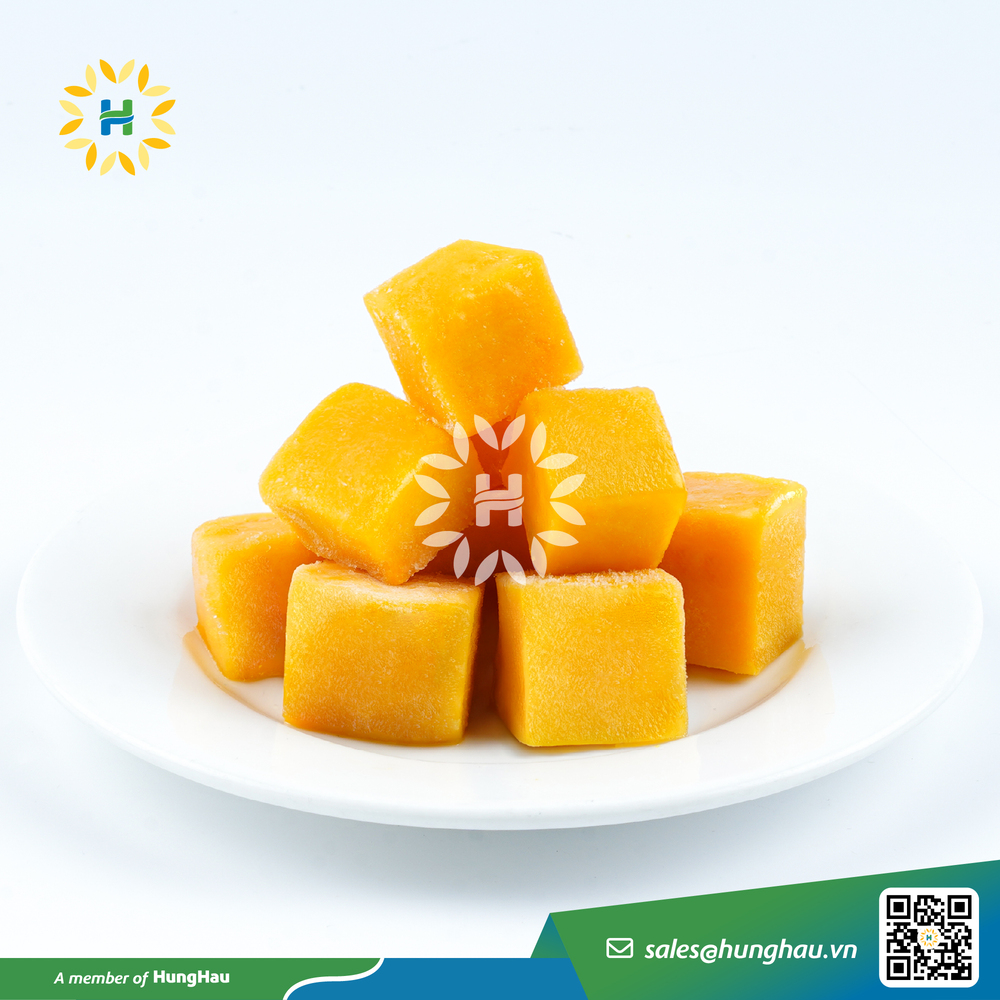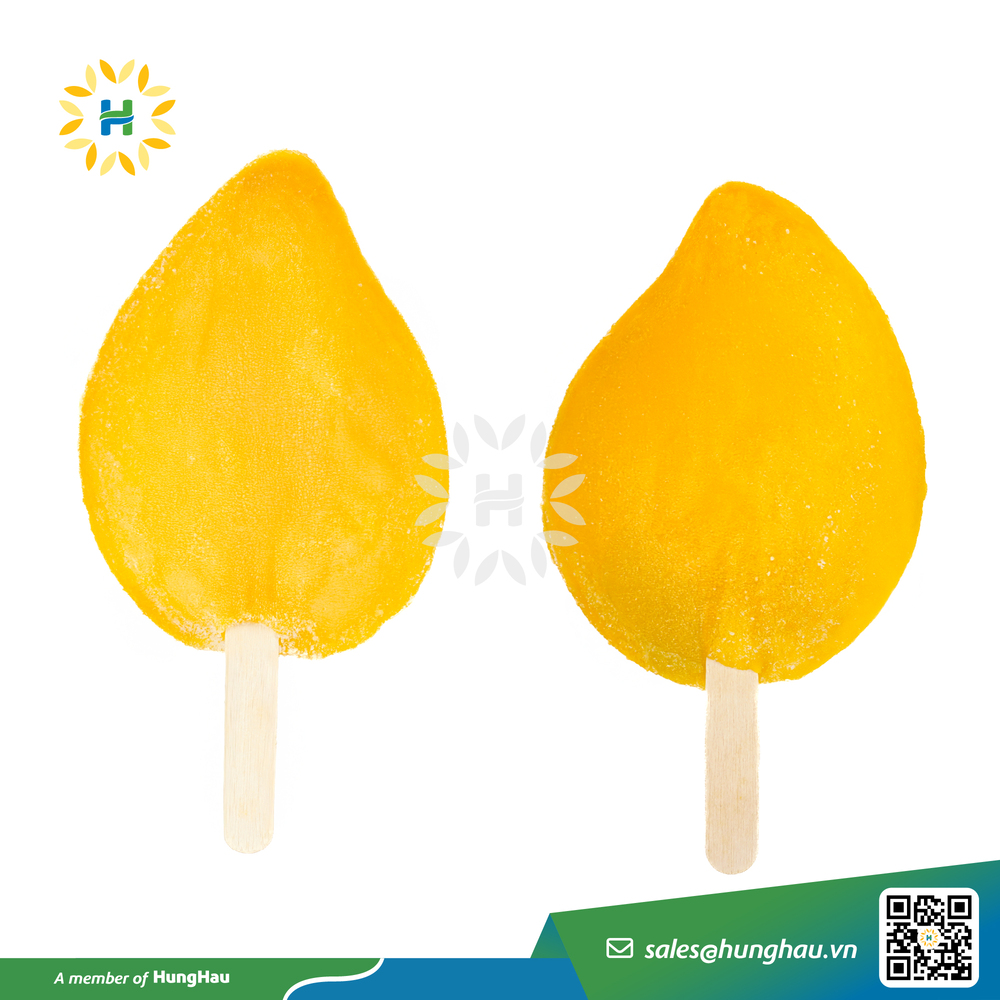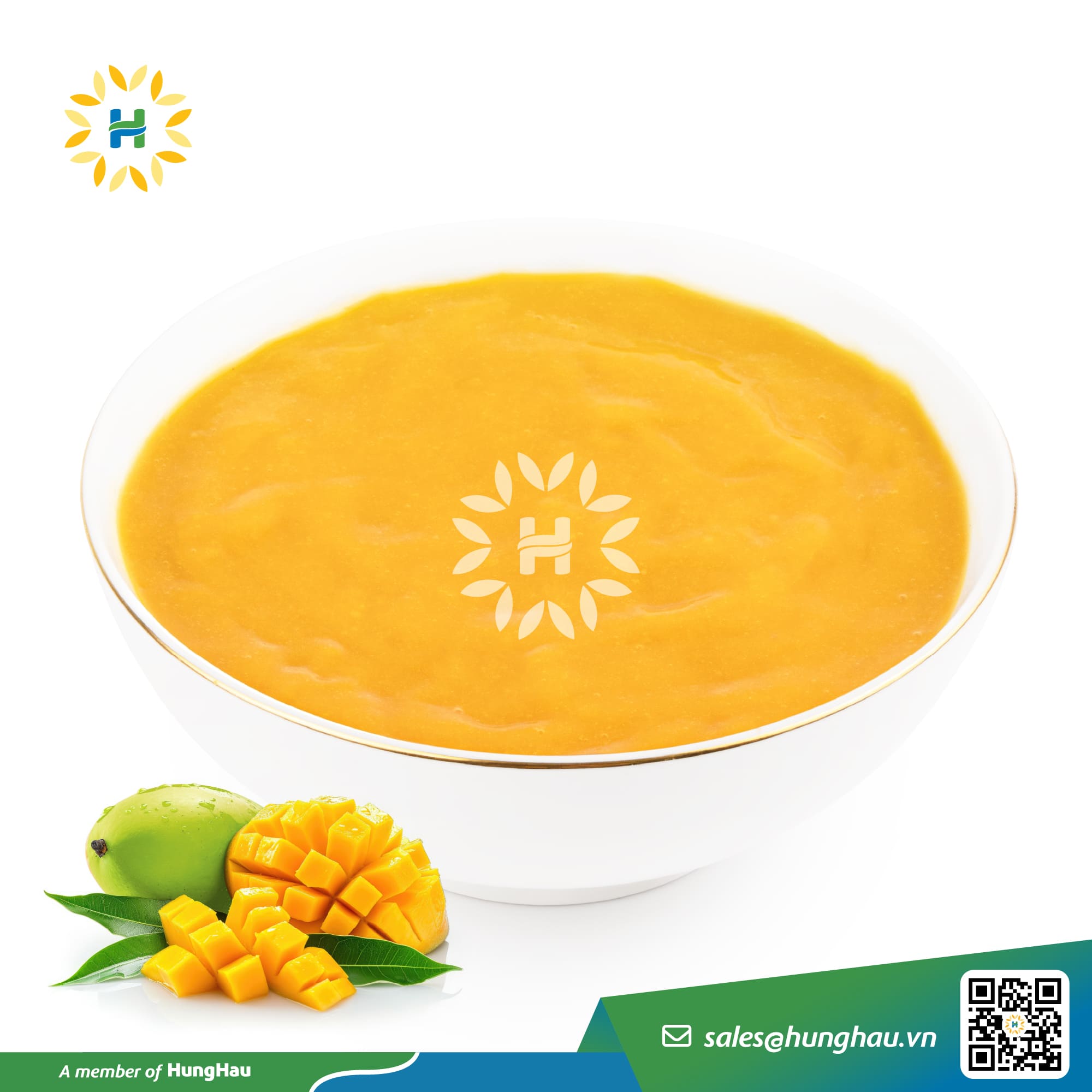Featured News, Market News, News & Event
HOW LONG UNTIL VIETNAM’S FROZEN MANGO EXPORTS REACH THE GLOBAL TOP 10?
Vietnam is currently ranked 13th among the world’s largest mango-exporting countries, with a total export value of around USD 310–320 million in 2024. While fresh mango remains the main export product, Vietnam’s frozen mango is rapidly gaining momentum, aiming to break into the global top 10. So, how long will it take for this goal to become a reality?
Top 10 mango exporting countries in the world and what’s their secret?
Top 10 leading mango exporters worldwide
According to 2024 statistics, the top 10 mango-exporting countries (including both fresh and processed mango products) are:
- Mexico: firmly holds the No.1 position thanks to high production volume and proximity to the U.S. market.
- The Netherlands: a re-export hub for mangoes into Europe, leveraging its advanced logistics systems.
- Brazil: takes advantage of off-season harvests to export to Europe during periods of low supply.
- India: the homeland of mangoes, known for premium varieties such as Alphonso and Kesar.
- United States: both a major consumer market and a re-exporter of value-added mango products.
- Germany: imports and re-exports processed mango products across Europe.
- Portugal: strong in frozen and canned mango segments.
- Burkina Faso: a notable player from Africa with a stable supply chain.
- South Africa: exports both fresh and processed mangoes, including puree and frozen products.
- Pakistan: rapidly growing thanks to quality fresh mangoes and competitive pricing.
What they have in common: These countries all share a strategic focus on post-harvest technology, strict quality control, and well-developed market strategies.
Common characteristics of leading frozen mango exporting countries
The top countries in frozen mango exports share several key strengths: integrated investment in processing infrastructure, cold chain logistics, and long-term market strategies. Specifically:
-
The common thread among the leading countries in frozen mango exports is their comprehensive investment in processing infrastructure, post-harvest technology, logistics systems, and long-term market strategies. Specifically:
-
Modern processing infrastructure is the top priority. These countries all employ IQF (Individual Quick Freezing) technology to ensure that mangoes retain their freshness, color, and nutritional value after freezing. This is also a mandatory requirement to access demanding markets such as Europe, the U.S., and Japan.
-
Cold-chain logistics and transparent traceability systems enable frozen mangoes to meet high standards of food safety and origin verification. Being able to trace products from farm to consumer not only builds trust but also enhances the value of the national brand.
-
Leveraging counter-seasonal advantages is a smart strategy effectively adopted by countries like Brazil and Peru. When Asian or African countries are at the end of their harvest season—or before it begins—they ramp up frozen mango exports to dominate the global market at times of limited supply.
-
Notably, the world’s top frozen mango exporters are also leaders in other agricultural products, demonstrating that their advanced agriculture sectors are built on long-standing experience and development.
Advantages of key leading countries in frozen mango exports
- Thailand: As one of Asia’s mango powerhouses, Thailand excels not only in fresh mango production but also stands out in the frozen mango sector. Thailand’s IQF mango products are primarily exported to high-standard markets such as Japan, South Korea, and Europe. The country’s success stems from heavy investment in modern processing facilities, achieving multiple international certifications like HACCP, ISO, and GlobalGAP, and maintaining close partnerships with farmers to ensure a stable supply of high-quality raw materials.
- Mexico: As the world’s number one mango exporter, Mexico maximizes its geographical advantage by being adjacent to the United States, the largest mango-consuming market globally. Thanks to this proximity, Mexico can deliver frozen mangoes quickly, with lower costs and optimal quality retention. Mexican companies have also heavily invested in advanced cold chain logistics and modern packaging, allowing them to maintain a sustainable competitive edge.
- Peru: A prime example of a rising star in the frozen mango industry. According to FreshFruitPortal (2025), Peru is projected to export over 67,000 tons of IQF mangoes in the 2024–2025 season — an impressive growth milestone. Peru’s strategy focuses on high-end processing techniques, particularly European-standard IQF technology, while aggressively marketing to demanding markets like the EU, UAE, and the U.S. With strict quality management, Peruvian frozen mangoes are increasingly favored in the convenience food industry, restaurants, and retail chains.

Where is Vietnam on the global mango export map?
What is Vietnam’s ranking in mango exports?
In recent years, Vietnam has gradually affirmed its position on the world mango export map. According to 2024 data, Vietnam ranks 13th globally in total mango export value, reaching about USD 310–320 million. However, most of this value still comes from fresh mangoes, while higher value-added products such as frozen mango remain modest.
For example, in 2023, Vietnam exported only 643 tons of frozen mango to the U.S., earning about USD 988,000. Although this figure is small, it grew by nearly 85% in volume and 83% in value compared to the previous year. This shows the strong growth potential of frozen mango exports if properly invested.
Vietnam’s frozen mango potential
Under HS Code 0811 (frozen fruit), Vietnam exported about 107,000 tons of products in 2024, reaching an approximate value of USD 240 million. Within this category, IQF mangoes—including Kaew IQF and Chu IQF varieties—are accounting for an increasing share, becoming one of the key products alongside bananas, dragon fruit, pineapples, and passion fruit.
Notably, the average export price of Vietnam’s frozen mango is only around USD 2.28/kg—significantly lower than Thailand (~USD 3.3/kg) and many other competitors. This is a clear competitive advantage, especially in price-sensitive markets such as China, the Middle East, and Africa.
Vietnam’s competitive advantages
Compared to many countries in the region, Vietnam has ideal conditions to strongly develop the frozen mango sector, particularly in the following aspects:
Abundant raw material supply: With mango cultivation spread across the Mekong Delta, Central Highlands, Central, and Northern regions, Vietnam can provide large volumes year-round. The diversity of varieties and climates extends the harvest season, facilitating consistent processing and export activities.
Competitive pricing: Thanks to reasonable production and labor costs, Vietnam’s frozen mango can be supplied at lower prices than competitors while maintaining quality. This is a major lever for expanding market share in high-demand markets with limited budgets.
Increasingly modern logistics infrastructure: Major ports such as Cat Lai, Phuoc Long, Cai Mep, and Hai Phong, combined with strong investment in cold storage, refrigerated containers, and cold chain operations, are enabling Vietnam’s fruit industry—particularly frozen mango—to access international markets more efficiently and cost-effectively than ever before.

Key markets for Vietnam’s frozen mango exports
While most of Vietnam’s fresh mango output is currently consumed domestically or exported in raw form to China, the frozen mango segment is opening the door to high-value global markets.
Thailand is currently the largest importer, accounting for nearly 50% of Vietnam’s total frozen mango exports. This partially reflects Thailand’s more advanced processing capacity—they often import for reprocessing or re-exporting to more demanding markets.
In addition, countries like South Korea, Japan, the United States, and European nations are gradually becoming promising markets, with high standards for quality, certifications, and traceability—factors that many Vietnamese companies are increasingly investing in to meet year by year.
Solutions: How Vietnam can elevate frozen mangoes on the global stage
To realize the goal of placing Vietnam among the top 10 frozen mango exporters, a set of strategic, synchronized, and long-term solutions is required. Below are four key directions:
-
Invest in Advanced Processing Technology
Adopting IQF (Individual Quick Freezing) technology along with automated systems (washing, cutting, grading, packaging) is essential to enhance product quality, prolong shelf life, and meet export standards.
-
Build a Linked Value Chain: Farming – Processing – Export
Establishing strong links between farmers, cooperatives, and businesses ensures a consistent supply of quality raw materials with stable pricing and volume.
Traceability and standardized farming practices are the keys to expanding into premium markets.
Example: Mango-growing regions like Chu mango in Đồng Tháp, Sơn La, or Cam Lâm (Khánh Hòa) are now being developed under tightly linked models with enterprises, aiming for sustainable development.
-
Develop National Frozen Mango Brands
Instead of exporting in bulk or under private labels, Vietnam must invest in building its own brand of frozen mangoes, increase product value, and make a mark on international markets—similar to what Thailand and Peru are doing.
Example: Thailand promotes its “Queen Frozen Mango” brand, while Peru exports under “Camposol Frozen Mango”—both featured in major retail chains in the US and Europe, with higher price tags than unbranded Vietnamese products.
-
Expand Global Distribution Networks
Actively participating in major trade shows like Anuga China, Summer Fancy Food Show, Anuga Germany, etc., and deepening ties with global distribution systems will help Vietnamese businesses gain faster access to demanding markets such as the EU, Japan, and the US.
Leading Vietnamese frozen mango exporters
Vietnam is experiencing strong growth in mango exports in general, and frozen mango in particular. Although the country’s current position is still modest compared to global leaders, if it maintains its current growth rate and accelerates investment in deep processing, Vietnam could very well break into the top 10 global frozen mango exporters within the next 4–6 years.

Positive growth is a promising sign
According to the General Department of Vietnam Customs, in 2023, Vietnam exported nearly 643 tons of frozen mango to the U.S., generating about USD 988,000—an increase of 84.7% in volume and 83.2% in value compared to the previous year.
During the same period, Vietnam’s total frozen fruit exports (HS code 0811) reached approximately USD 240 million, with frozen mango making up a steadily growing proportion.
If Vietnam maintains a growth rate of 20–30% per year, it has every opportunity to catch up with countries currently ranking 10th to 12th globally.
Processing infrastructure is rapidly improving
As one of Vietnam’s leading agricultural suppliers, HungHau Foods not only pioneers investment in deep-processing technology but also plays an important role in enhancing the value of Vietnamese agricultural products in the global market. With its HungHau Vegetables Co,. ltd meeting the strictest export standards for the U.S., EU, Japan, South Korea, and more, HungHau Foods has affirmed its position as one of Vietnam’s top frozen fruit exporters.
Beyond advanced technologies such as IQF freezing and automated packaging, the company focuses on building a sustainable value chain through close partnerships with farmers in standardized growing areas in the Mekong Delta.
With its commitment to quality, transparent traceability, and professional service, HungHau Foods is now a trusted partner of numerous international importers, contributing to elevating Vietnamese agricultural products on the global export map.

Forecast: When will Vietnam rise to the global Top 10?
HungHau Foods – A Pioneer in Vietnamese frozen mango export
As one of the pioneering enterprises in agricultural processing, HungHau Foods has been steadily asserting its position on Vietnam’s frozen mango export map.
With its HFV factory (HungHau Vegetables Co., Ltd.) located in the key raw material area of the Mekong Delta, HungHau Foods not only operates a modern IQF freezing line with automated sorting, washing, cutting, and packaging systems, but also develops farmer-standard raw material zones. These meet the strict requirements of over 80 countries—including demanding markets such as the U.S., Japan, and the EU—with a 14,000 m² facility and a processing capacity of 2,500 tons per month.
Beyond production, HungHau Foods actively participates in major international trade fairs such as Anuga China, Anuga Germany, and the Summer Fancy Food Show (USA) to expand its partner network and promote Vietnamese mango branding worldwide. The company also continues to invest in product standardization, brand building, and packaging innovation to enhance competitiveness against industry leaders such as Thailand, Peru, and Mexico.
HungHau Foods offers a diverse range of premium mango varieties—Kaew (Thai) mango, Cat Chu mango, and more—processed flexibly to meet market needs: mango sticks, mango ice cuts, mango dice, and mango puree, suitable for the food, beverage, and high-end food ingredient industries.
Guided by the vision “From Farm to Global,” HungHau Foods is not only a market leader but also plays a vital role in propelling Vietnam’s frozen mango sector toward a place in the global top 10.
In addition to frozen mango, HungHau Foods exports a wide variety of high-quality processed agricultural products such as frozen durian, frozen passion fruit, frozen dragon fruit chunks, mixed vegetables, and dried fruits. All are manufactured using modern processes, certified by BRCGS, FDA, HALAL, ISO 22000, and distributed in high-standard markets including Japan, South Korea, Europe, the United States, and China.
Contact for Partnerships:
HungHau Foods Joint Stock Company
Address: 642 Au Co Street, Bay Hien Ward, Ho Chi Minh City, Vietnam
Email: sales@hunghau.vn
Email: hana@hunghau.vn
Hotline: (+84)79 721 3333
Email: yenn@hunghau.vn
Hotline: (+84)78 520 3333
Website: www.hfoods.vn
See more:
Reference links
Frozen Mango Market Size, Share, Trends and Forecast 2032
